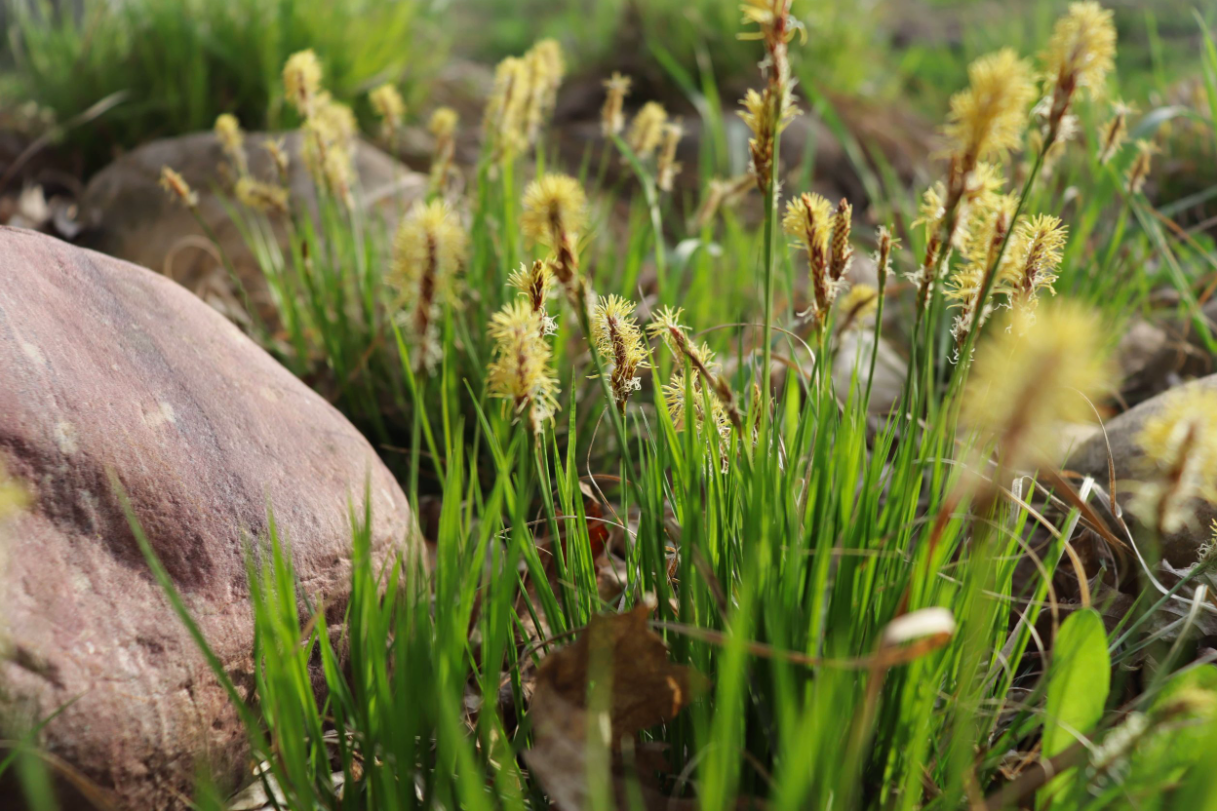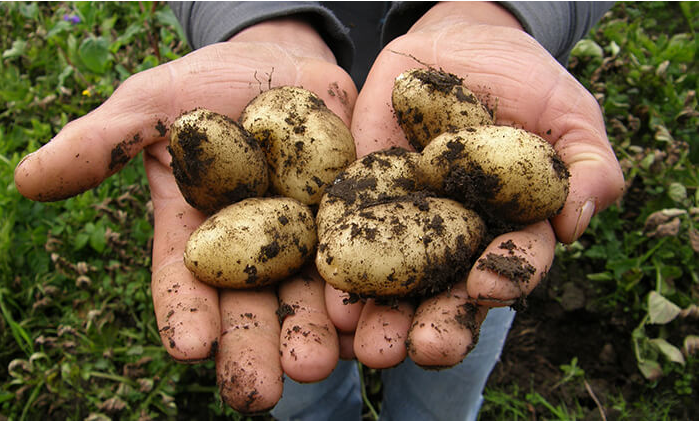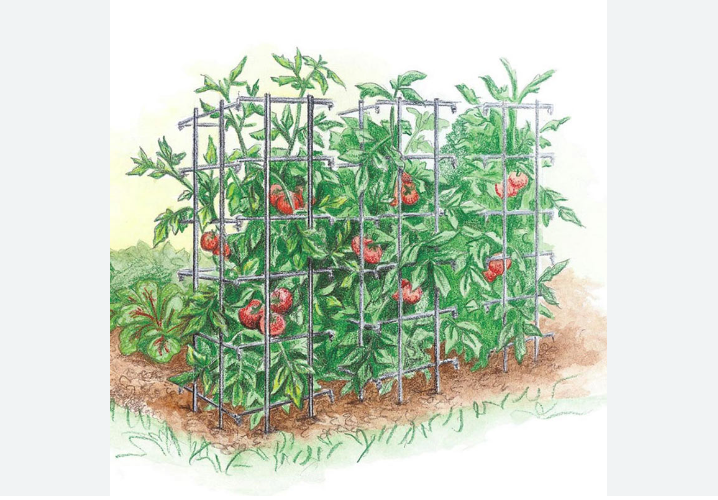Plant lovers and gardeners always want to make their backyards beautiful every day. One rare but exciting way is to use sedge grass.
Sedge Grass – Introduction
Sedges are a type of plant with an uncanny resemblance to grass and belong to the Cyperaceae family. Their genus is Carex, and people also remember them as Carex plants. This plant is a great addition to your garden. There are many reasons behind having them. Sedge is a diverse family of plants with thousands of varieties and types in their species. It is important to identify the plant before proceeding, as its appearance resembles the grass.
If you cut them, their stems will be triangular. These grass-like plants have brown flowers on their slender stems. Also, if you want to plant them in your home garden, go for the genus Carex. They look like regular grass, but their foliage has different colors that range widely. Since they have a wide range of varieties, their growing conditions are also very different.
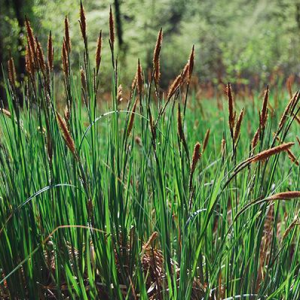
Sedge Grass
How to Identify Sedge Grass?
This plant looks like grass for a new gardener or any other person who is not an expert. But if you want to plant them in your backyard, there are a few vital things to understand beforehand. Every plant has some minor characteristics that help one identify the plant from resembling species.
We can apply the same identifying process to the Carex grass. Following are the few vital features of this plant that can help us in the identification procedure.
Triangular Stem:
The stem-like structure of every plant is vital for its growth and life. This structure provides the basic strength and balance to a plant. If you closely observe the true grass in your backyard, you will see the shape of its stem. True grass has a rounded stem that gives the plant’s core strength.
However, the stem of the Carex plant is a little different. Unlike true grass, Sedges come with a triangular stem. This unique plant structure makes it easy to distinguish from true grass. Also, if you observe closely, you will find distinct edges on the stem of this plant.
Growth Habit:
The growing habit of the sedge plant is also different from that of grass. The true grass spreads through the stolons and forms dense patches. But, this plant has more of a clumping growth habit. This habit means that the plant grows outside from the center of the stem and forms a compact shape.
The overall shape of this plant looks like a mound. This plant should be your choice if you want to give your garden a cohesive display. Plant them in mass planting formation, and they can create a visually appealing formation due to their growing habit.
Inflorescence:
This inflorescence is the defining characteristic of the Sedge plant. Unlike true grass, this plant can produce inflorescence. Before describing this ability, we need to understand what inflorescence means. Inflorescence is the ability of a plant to form flowers at a specific time of the year in certain shapes and clusters.
We know sedges are available in many types and varieties. Thus, the formation of flowers is also different in each type. In a few types, the flowers are in the classic cluster, where they are packed together. At the same time, some types of this plant produce flowers resembling a cone or Spike.
Moist Environment:
We know water is an essential part of a plant’s life. Without proper watering, all the plants die in a few days when their leaves turn brown. However, if we reverse the conditions, it can also hurt your plant. Extra water and moist soil can have a negative impact on your plants as well. That’s why people with moist soil or waterlogging problems can’t figure out which plant to get for their backyard. But sedge grass has solved this problem for us.
This plant has an adaptable nature. You can plant them in a soil with high moisture. Also, if you have a waterlogging problem in your backyard, Carex grass will work excellently in this moist environment. Sedges have a high water table. This unique quality makes them easy to plant in your garden.
Practical Preference Over Grass:
Uses of true grass are limited to the extent that they are rare for humans. But sedges have been used by humans for many generations. This plant has a flexible stem. Thus, when we harvest the Carex, their use becomes prominent. You can harvest sedges to make woven materials. We can make many items using the Carex plant. Some of them are baskets and mats.
This skill has been applied for many generations and is becoming an art these days. After they are harvested, you will need to dry out the plants. This drying-out process enhances the flexibility and durability of the sedge grass.
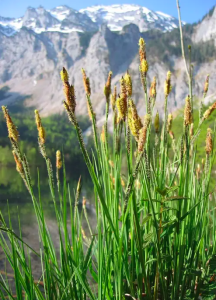
Types of Sedge Grass
Types of Sedge Grass:
We know sedges have several varieties, each with distinct qualities and characteristics. Some of those types are here below for your information.
Pennsylvania Sedge:
This specific species of plant is ideal for planting under the shade. If you already have some plants in your garden, whether under the shade or Sun, give them a neighborhood of Pennsylvania Sedge. This variety of plant is ideal for spreading as a groundcover. Thus, it provides a great compliment to all the plants around it. This variety has deep green blades that can grow 12 inches in height. This sedge grass is a great alternative to your lawn. You can also use the variety to turn lawns into shades.
If you are technical and read the hardiness zone map before planting a variety, we are here to help you. The ideal zone for planting the Pennsylvania sedge is zone 3 to 8. The plant works best under shade and in open Sunlight.
Appalachian Sedge:
Appalachian Carex is a wild variety of plants, and you can see it along the Appalachian Mountains. This variety has slender, fine leaves. If you have a lot of trees in your garden and need something to cover the soil, use Appalachian Sedge. This variety is ideal for planting under the shade in minimum Sunlight. Also, we can use this type of Sedge along the walkway to make a beautiful border.
If you have rocky soil where other plants don’t survive, use Appalachian Carex. This variety grows well in rocky conditions if you have the best drainage system. However, Appalachia can also thrive if your soil isn’t too wet. The variety is best planted in zones 3 to 7 for the technical geeks. They can also grow up to 12 inches under shade and Sunlight.
Eastern Star Sedge:
If you have a rain garden and want to replace your lawn with something exotic, eastern star sedge should be your choice. This variety of the plant has star-shaped flowers. These flowers bloom during the Spring season. The best thing about this variety is its ability to grow in partial shade and partial Sunlight. You should plant this type of Sedge if you have moist soil.
Also, the Eastern Star sedge is native to Eastern North and Central America. All bird lovers should have this Carex in their backyard, as it provides food for gamebirds and songbirds. If you refer to the hardiness zone map before deciding about a plant, let’s dive into that aspect. You can get the easter star sedge in any zone from 4 to 7. This variety grows up to 24 inches in height when it is mature.
Palm Sedge:
Palm sedge is a variety of Carex plants, technically known as Muskingum sedge. This plant is named after a river in Ohio, the Muskingum River. It is ideal for growing in moist conditions. The leaves of the plant are lime green, giving a bright hue. This plant can survive in different types of soil. Even if you have soil with a poor drainage system and want to have a plant, go for the palm Sedge.
To up the ante, this plant is the food source for many birds. The ideal place for growing this plant to its full potential is under the Sun. But it won’t if you move the plant to a partial shade in your garden. You can plant this variety if you fall into zones 4 to 7. When the plant reaches maturity, it can grow to 24 inches.
Cherokee Sedge:
Cherokee Sdge is a different species of plant as it can grow under the Sun and share in similar ways. The natural habitat of this plant is in the Southeastern part of the US. The adaptability of this variety is incredible. Thus making it suitable for every condition when it comes to Sunlight. You can plant this variety in a group or individually as well. As the Cherokee Sedge reaches its mature size, it can reach 3 feet. The size of this variety makes them ideal to plant in a container.
They create a unique ground cover and maintain their flexibility after reaching full size. This variety’s emerald green foliage remains attractive throughout the season. The variety also has fruit and flowers to add something unique to the texture. If your area falls under zones six to nine, you can plant this Sedge.
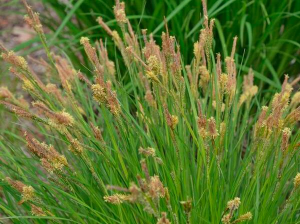
Uses of Sedge Grass
Uses of Sedge Grass:
Now that we understand different types of Sedge, we move on to the next step. There are plenty of benefits to Sedge grass. Some of them are listed below.
Erosion Control and Habitat Creation:
If you are a gardener or a farmer, erosion is the worst thing to happen to your soil. It will ruin years of hard work and affect future chances of getting a financial benefit. The best thing you can do to avoid erosion is to Sedge grass. These plants have a strong root system. This root system stabilizes the soil. Thus, they help the soil avoid erosion. Plant some sedge grass if your land is between a water flow area. This way, your plant can reduce environmental damage and help you battle erosion.
Not only does the Carex help the environment by reducing erosion, but it also benefits animals, insects, and other diverse species of plants. These plants have different growth habits, which helps them provide shelter and food for the other plants and insects. The foliage of the plant protects insects, while small birds also create nests on it.
Water Filtration:
One of the rare benefits of Sedge grass is its water filtration system. These plants can filter and purify water. The plant has above-ground foliage, strong root networks, and physical structures. This combination helps the plant remove pollutants, sediment, and nutrients from the water. This process filters the water and provides a healthy life for the aquatic organisms around the plant.
Cultural Uses:
Along with providing positive environmental factors, Sedge grass has useful cultural benefits. Various societies use the plant to make many household items. Due to its flexibility and strength, you can create baskets, mats, and other handicrafts. In some cultures, items made by Carex have symbolic importance as well.
Further, you can use different colored Sedge to create furniture. Due to the combination of various colours, the furniture made by these plans looks creative and beautiful. Customers who are more inclined towards vintage, rustic, and natural styles love getting their hands on this type of furniture. The best examples of furniture made by Carex Grass include chairs and sofas. Sometimes, you can combine the Carex with wooden furniture for a sophisticated result.
How to Plant Sedge Grass:
Now that we understand many aspects of sedge, let’s see how we can plant them. Before we plant, we must prepare for the Sedge grass.
Soil Preparation:
Before planting Carex grass, we need to ensure that the soil is ready for this plant. Most soils have true grass or weeds in them. Without those plants, Sedge grass will have a hard time making space for it. If you find weeds or true grass, pull them with your hand or use a spray from the market. After applying the spray, wait a few hours to begin the plantation.
As you prepare to plant them, experts suggest measuring the total area of your land. Once you have the total square feet of the land, you can determine how much space to leave between the two Carex.
Plantation:
Set all your plants in equal space on the land. You can also use paint to mark the spots for the plantation. It is best to start from the border so you can distribute the grass evenly. There should be a minimum of 24 inches of space between two plants while keeping a distance of 12 inches from the border is best.
Set up the plants in the first row and gradually move to the next. Continue the process until all the space is filled. Now start digging in the marked spots. If you have dense soil, it is better to mix organic matter into the soil before planting.
The sedge grass will be available in the container as soon as we get it from the market. You need to remove the plant carefully. In the beginning, loosen up the root ball with your hands. Now, lift the plant from the root ball. Try not to squeeze the plant while lifting the plant. Now, carefully set up the plant in the hole you dug in the soil. Fill up the hole halfway with soil and soak it up with water. Now add more soil till it reaches the root level. At the end, water the plant deeply.
After plating the Sedge, keep the plant covered with water and organic matter. You will soon see results.
Read More: Heuchera – The Complete Guide to Grow Coral Bells (2024)
FAQs:
Following are a few commonly asked questions about the Carex plant.
1. What is a Sedge grass?
Sedge grass is a type of plant that grows in wetlands or moist soils.
2: How can a person identify sedge grass?
We can identify the Sedge grass upon checking the stems. This plant has triangular stems.
3: What are some common types of Sedge grass?
The most common types of sedge grass are Pennsylvania sedge, Appalachian Sedge, Eastern Star Sedge, and Palm Sedge.
Final Words:
Now we understand how beneficial this is to sedge grass. These plants are best kept if you don’t have access to Sunlight during the day. We can now head to the market and get the best-looking grass without worrying about extra water in the soil.

